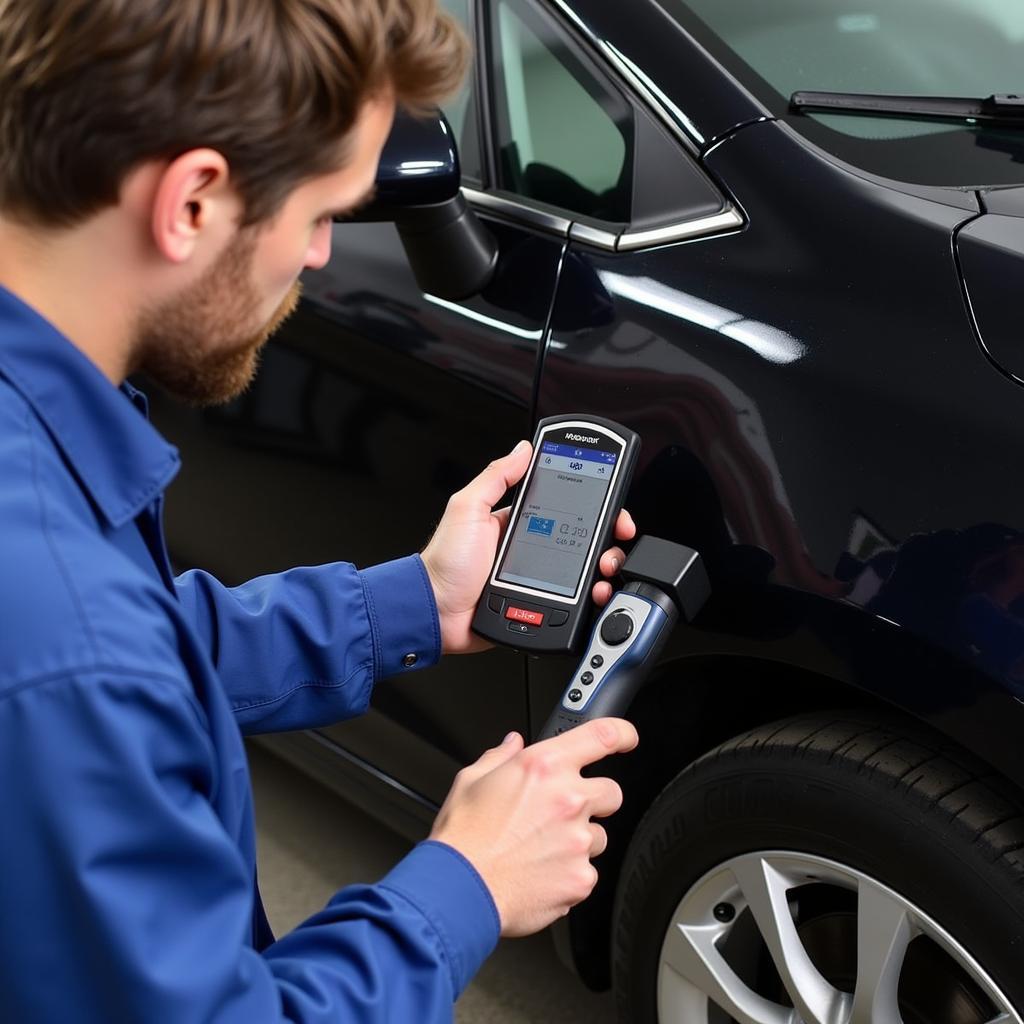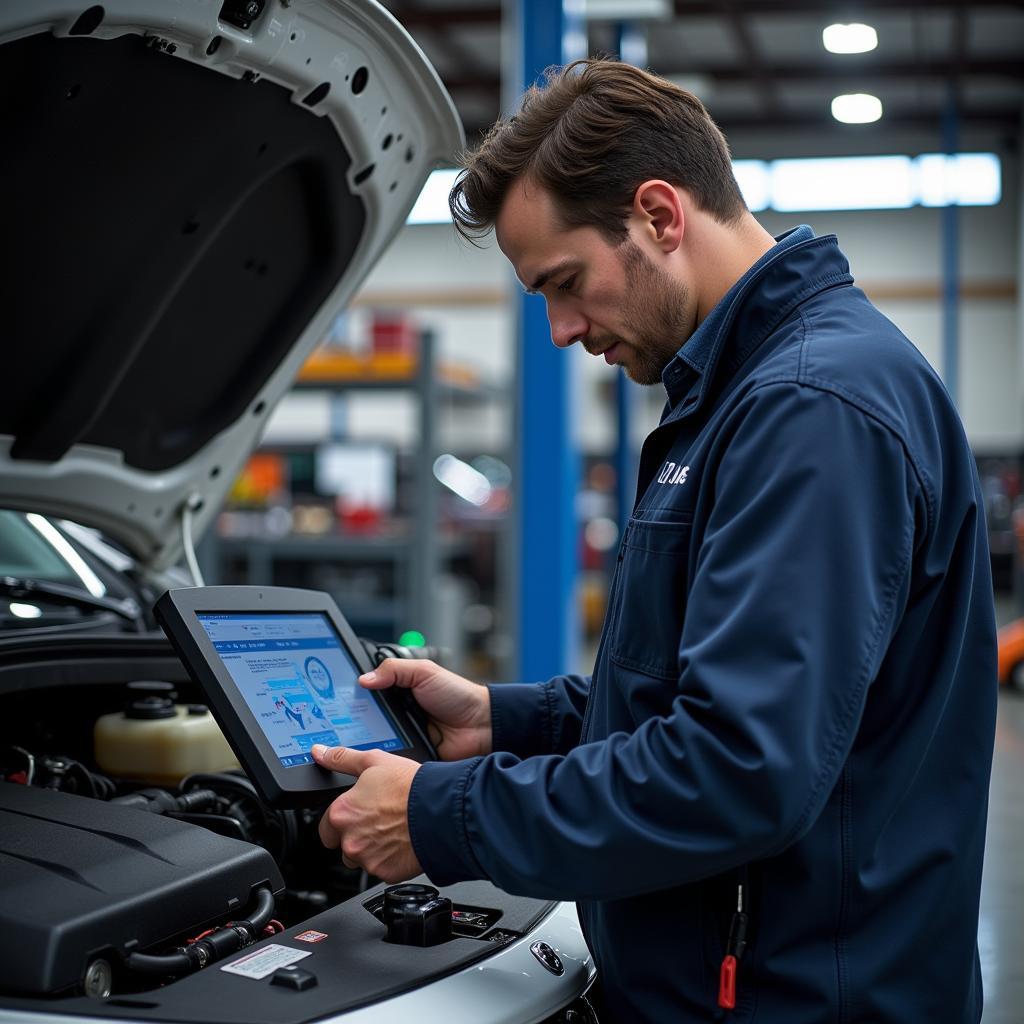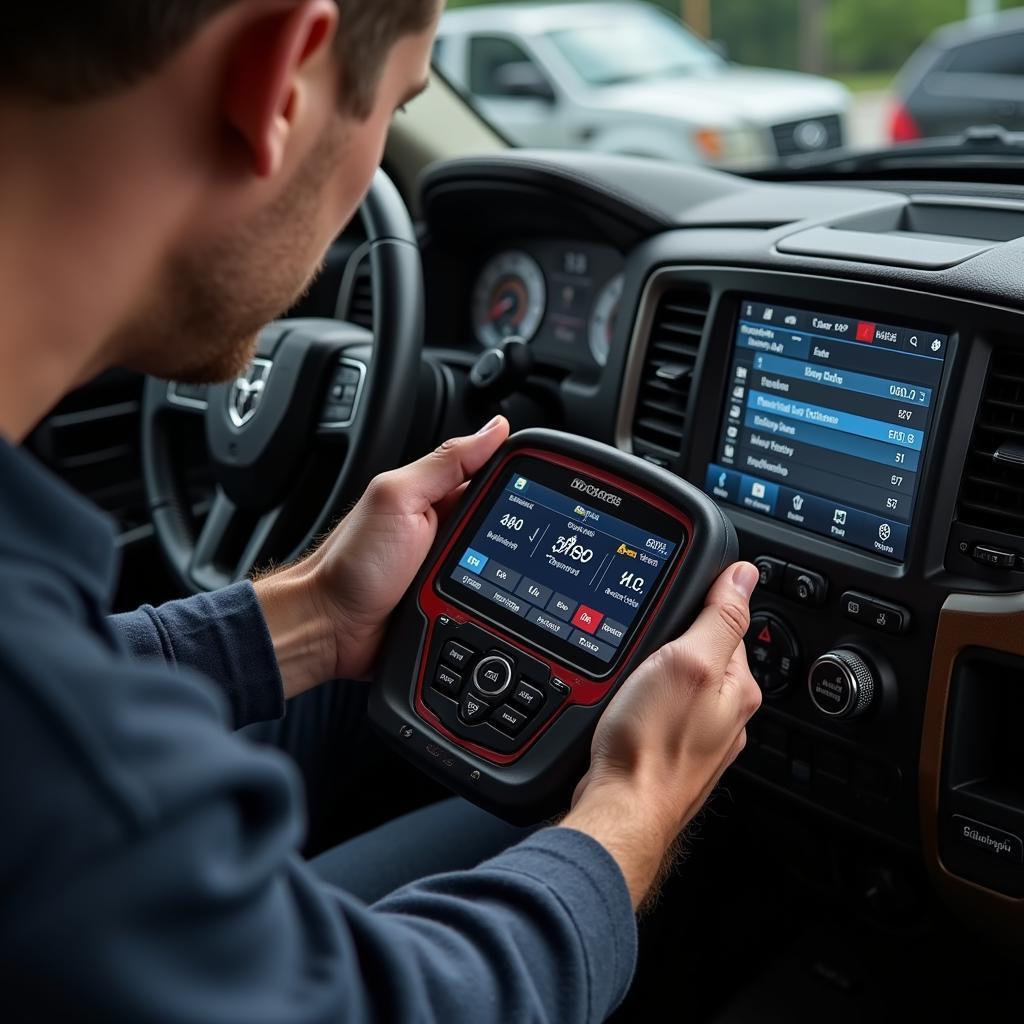For both seasoned mechanics and car enthusiasts, an automotive scan tool is an indispensable piece of equipment. These devices act as a window into your vehicle’s computer system, allowing you to read and diagnose problems, reset warning lights, and even program new keys. However, with a plethora of options available, navigating the world of automotive scan tools can feel overwhelming. This comprehensive guide will equip you with the knowledge to confidently choose the perfect automotive scan tool for your specific needs.
Understanding Your Needs and Budget
Before delving into the intricacies of automotive scan tools, it’s crucial to assess your requirements and budget constraints.
Ask yourself the following questions:
- What types of vehicles will I be working on (make, model, year)?
- What level of diagnostic depth do I require (basic code reading, advanced diagnostics, programming capabilities)?
- How often will I be using the scan tool?
- What is my budget?
Answering these questions will provide clarity on the functionalities and price range that align with your specific needs.
Types of Automotive Scan Tools
Automotive scan tools come in various shapes and sizes, each tailored to different levels of expertise and diagnostic requirements. Let’s break down the most common types:
1. Code Readers:
- Ideal for: DIYers and car owners seeking to read and clear basic diagnostic trouble codes (DTCs).
- Capabilities: Retrieve generic (OBD-II) codes, often provide code definitions, and may offer limited live data streaming.
- Price range: Most affordable option.
2. OBD-II Scan Tools:
- Ideal for: Car owners, DIYers, and mechanics who require more functionality than basic code readers.
- Capabilities: Read and clear generic and manufacturer-specific codes, offer live data streaming, perform basic tests like component activations, and may include additional features like freeze frame data and emissions readiness checks.
- Price range: Wider range, with prices varying based on features and brand reputation.
3. Professional-Grade Scan Tools:
- Ideal for: Professional mechanics and technicians who require advanced diagnostic capabilities.
- Capabilities: Comprehensive code reading and clearing (including manufacturer-specific codes), extensive live data streaming, bi-directional controls (actuators, adaptations), advanced programming and coding functions, and access to technical service bulletins (TSBs).
- Price range: Most expensive option, with prices ranging from hundreds to thousands of dollars.
Key Features to Consider
When selecting an automotive scan tool, prioritize features that align with your needs and budget. Here are some crucial aspects to consider:
1. Vehicle Coverage:
Ensure the scan tool supports the make, model, and year range of the vehicles you intend to work on. Some tools specialize in specific manufacturers, while others offer broader coverage.
2. Code Reading and Clearing:
At a minimum, the scan tool should be able to read and clear both generic (OBD-II) and manufacturer-specific codes.
3. Live Data Streaming:
Live data allows you to monitor various sensor readings in real-time, aiding in diagnosis and problem-solving.
4. Bi-Directional Controls:
Bi-directional controls enable you to command specific vehicle components (e.g., actuators, solenoids) for testing and diagnosis.
5. Special Functions:
Some scan tools offer advanced functions like key programming, injector coding, and module resets, which can be invaluable for certain repairs.
6. Software Updates:
Regular software updates ensure compatibility with the latest vehicle models and may introduce new features.
 Mechanic Using Scan Tool on Car
Mechanic Using Scan Tool on Car
Top Tips for Choosing the Right Scan Tool
1. Research Extensively:
Read reviews, compare features, and explore different brands to find a scan tool that aligns with your needs and budget.
2. Consider Future Needs:
If you anticipate working on a wider range of vehicles or require more advanced functionalities in the future, invest in a tool with room to grow.
3. Prioritize User-Friendliness:
Opt for a scan tool with an intuitive interface, clear menus, and helpful features like built-in troubleshooting guides.
4. Seek Expert Advice:
If you’re unsure about specific features or need personalized recommendations, consult with experienced mechanics or automotive professionals.
Conclusion
Selecting the right automotive scan tool empowers you to take control of your vehicle’s diagnostics and maintenance. By understanding your needs, exploring the different types of scan tools, and considering key features, you can make an informed decision that will serve you well for years to come.
Need further assistance in choosing the perfect automotive scan tool? Our team of experts at ScanToolUS is here to help! Contact us at +1 (641) 206-8880 or visit our office at 1615 S Laramie Ave, Cicero, IL 60804, USA, and we’ll guide you toward the ideal solution for your automotive diagnostic needs.


